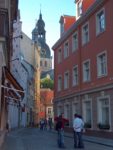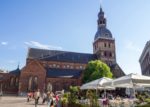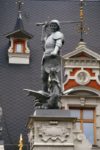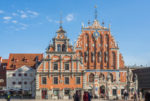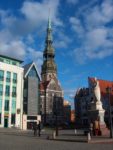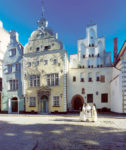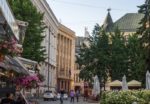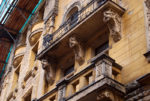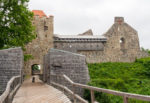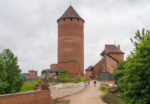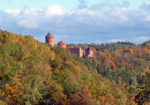Photo credit: Kestutis Ambrozaitis
The Riches of Riga: 8 Ways to Experience Latvia’s Capital of Culture

Riga, the cosmopolitan capital and heart of Latvia, has long been one of the largest and most vibrant cities in the Baltics. Situated at an important crossroads between Estonia and Lithuania, the city was for centuries a strategic chess piece for several great European empires including Poland, Sweden, Germany, and Russia – all of whom left their mark on Riga’s overall look and cultural feel.
Damage from both world wars and neglect during its Soviet period threatened to throw the city into utter obscurity. But today after nearly three decades of independence and extensive restoration work in its historic core, Riga has once again reclaimed its title as a flourishing center of the arts, architecture, and nightlife.
The city was added to the UNESCO World Heritage List in 1997, and for good reason — it has one of the best preserved medieval town centers you can find, and has been recognized as having the largest collection of art nouveau buildings in Europe. Aside from the astonishing architectural gems, travelers will find a lively metropolis full of world-class museums, chic restaurants, a stellar music and modern art scene, and sunny squares and gardens humming with the sounds of locals, street performers, and tourists.
Here are some of our favorite ways to discover the best of this booming Baltic capital:
1. Explore the Cobbled Streets of the Old Town
With charming cobblestone streets, chic cafes, colorful medieval and Gothic architecture, the UNESCO-listed Old Town center of Riga — known as the Vecriga — is a delightful way to introduce yourself to the history and cultural significance of the city.
A great place to start is Doma Laukums, or Cathedral Square, where you’ll find Riga’s enormous Dome Cathedral, which was founded in 1211. Blending Romanesque and Gothic architectural features, this grand medieval church houses one of Europe’s largest and most valuable organs, made from a remarkable 6,768 pipes.
(click image to view larger photo)
Flanking the southern side of the Old Town Square is one of Riga’s most important buildings, the House of the Blackheads. Built in 1344 as a sort of fraternity house for unmarried Hanseatic merchants, this rare example of Gothic-Dutch Renaissance architecture boasts one of the most ornate facades in the city. Although the original house was damaged in 1941 and leveled by the Soviets seven years later, the entire structure was lovingly recreated in 2000 in time for Riga’s 800th birthday celebrations.
Across the way is Gothic St. Peter’s Church, with its famous towering spire. The tallest in the world when it was built, it burned twice and was shelled once. In 1973, it was finally rebuilt in steel. Take the elevator 216 feet up the restored spire for fabulous views of the city.
(click image to view larger photo)
While wandering around the Old Town, be sure to take time to explore the smaller streets and alleyways off the main avenues. Little Maza Pils contains the oldest medieval residences in the city — nicknamed the “Three Brothers” — which date back as far as the 15th century and offer insight into the way Riga used to look like centuries ago. Just off Livu Square is Riga’s “Cat House,” so named because of the angry black cat statuette mounted on the roof — a snub to members of the former Great Guild Hall across the street. You’ll find many souvenirs and postcards decorated with images of this famous arched black cat in markets and shops in the Old Town.
2. Delve Deep Into Riga’s Sobering Modern History at the Occupation Museum
Riga is filled with a number of fascinating museums that tell the story of the nation’s long and dramatic past. One of the best in the city is the Museum of Occupation, established in 1993 in an unusual Soviet-era building on the Old Town Square. The museum documents the occupation of Latvia by both Nazi and Soviet forces, and explains the Latvian fight for independence in 1991.
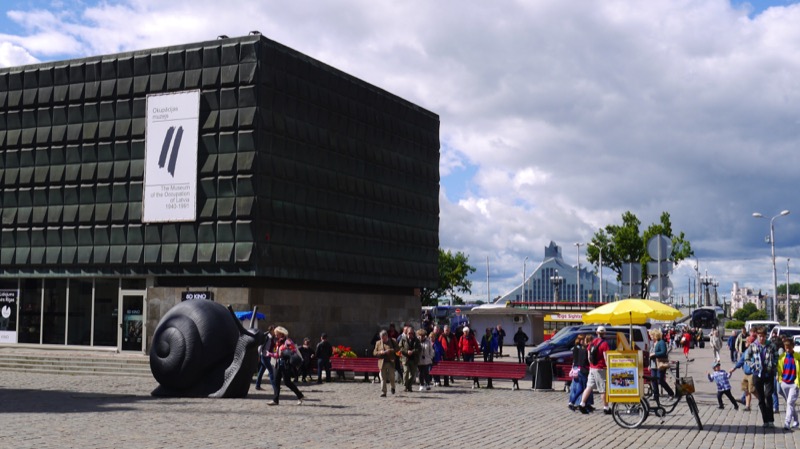
Exhibits show what daily life was like under these two foreign totalitarian regimes. Dozens of original documents and artifacts from that time are on display, from photographs, military uniforms, and propaganda posters to handwritten notes and firsthand accounts of some of the most gruesome and heartbreaking events that occurred during the era. For a more interactive experience, visitors can tour a re-creation of a prison barracks formerly used by the KGB.
3. Admire Outstanding Art Nouveau Architecture
Architecture and design buffs — particularly fans of the fabulously ornate art nouveau style — are sure to find their personal mecca in Riga. Art nouveau took root here in the late 19th and early 20th centuries, and resulted in beautifully decorated facades adorned with sculpture, ironwork, and stylized motifs drawn from nature. UNESCO has declared that Riga has the finest collection of art nouveau architecture in Europe, with a remarkable 750 buildings throughout the city center that survived the ravages of WWII.
You can admire Riga’s magnificent art nouveau facades on a guided walking tour that showcases the best examples of the style. The most exquisite structures can be found along Alberta Iela and Elizabetes Iela, located a few blocks north of the Old Town. Mikhail Eisenstein, father of the famed Soviet film director Sergei Eisenstein, designed several of the most breathtaking buildings here.
(click image to view larger photo)
If you want to dive even deeper into the history and creativity of the movement, be sure to visit Riga’s Art Nouveau Museum. Opened in 2009, the museum features furnishings, clothing, utensils, and decorations from the art nouveau era. The museum is ensconced in one of the city’s outstanding art nouveau buildings, designed by famed Latvian architect Konstantins Peksens in 1903. The handsome, cream-colored exterior is enhanced with carvings, balconies, and turrets, and the interior includes a magnificent spiral staircase ornamented with frescoes.
4. Laze Away the Day in Riga’s Picturesque Parks
When you need a moment for rest and relaxation, set off for a stroll in one of Riga’s numerous parks and green spaces. A local favorite is the Riga Canal, once the city’s old defensive moat that protected it from invaders. Today, it’s been renovated into a serene strip of parkland lined with lush 19th century plantings, fountains, and statues. The park has paved boulevards for walking or cycling, but you can also opt to take a leisurely boat ride on the canal, a great way to see the city from a new perspective.
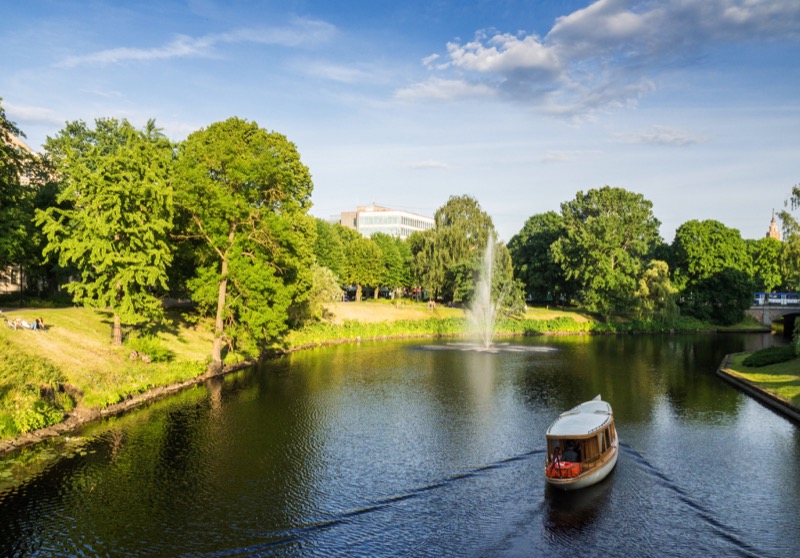
As you amble along the canal, be sure to make a stop at Bastion Hill. Once part of the old city walls, this former military fortification offers fantastic views of Riga’s medieval Powder Tower and Jakob’s Barracks.

If you’re outside of the Old Town, take a stroll in Vermanes Garden, where you can find local artisan stalls and outdoor concerts in the warm summer months. Or if you’re touring around the art nouveau district, you can make a stop at the Esplanade to admire the Soviet-era sculptures and grab a bite to eat at one of park’s open-air cafes.
5. Browse the Bustling Central Market
Mingle with Riga’s local shoppers and 3,000+ vendors at the lively, sprawling Central Market, the best place in the city for both people-watching and stocking up for a picnic. Here, you can browse the farmers’ stalls piled high with fruits, dairy products, meats, and vegetables, or admire the works of local artists and craftspeople – all spread out over five gigantic zeppelin hangars. With a market so large, it might be hard to tell that nearly 100,000 visitors pour through here every day.
If hunger pangs hit, enjoy the market’s newest section called the Central Gastronomy Market (Gastro Tirgus), the first of its kind in the Baltics. This “gastro market” features 20 restaurants and two bars offering locally sourced meals, from burgers, pizzas, and dumplings to sushi, soups, and Asian fare.

6. Satiate Your Sweet Tooth at the Laima Chocolate Museum & Factory
Travelers with a sweet tooth will want to satisfy their cravings at one of Riga’s best-known chocolate shops, the Laima Chocolate Factory. Latvians love their chocolate, and some of the city’s best can be found at this long-established confectioner, a local favorite since its founding in 1921.
Aside from perusing the cafe stocked with cocoa-covered treats, visitors can get a peek into Laima’s (literally) rich chocolate-making tradition at the modest onsite museum. The exhibits introduce visitors to the chocolate-making process, and elaborate on the history of the store, which has stood here through world wars and the fall of Communism.

If you’re searching for something truly unique, treat yourself to one of Laima’s master chocolate-making classes. A master chocolate artisan will guide you through the basics of truffle-making during the class, then you’ll have a chance to try your hand at the process and create delectable confections of your own to take home.
7. Marvel at Magnificent Castles & Manors
Towering castles and palaces aren’t always the first things that spring to mind when thinking about Latvia. But much of the countryside is sprinkled with the fascinating remains of fortresses and royal residences, a number of which can be explored on a day trip from Riga.
If you want to cross several significant sites off your list, head towards Gauja National Park, where you’ll find Sigulda Castle ruins near the park’s entrance. Originally built between 1207 and 1221 by the Livonian Knights, Sigulda once included a massive knight’s stronghold and a basilica cathedral. The castle complex was largely destroyed in the 18th century, but the southwest corner and a tower from the central gate still survive.
Be sure to visit the nearby castle of Turaida, founded by the archbishops of Riga in 1214. Built of red brick with circular watchtowers, the castle blew up in the 18th century when lightning hit its gunpowder cache. Restored in the mid-20th century, the castle’s main tower offers excellent views over the town and across the scenic Gauja River Valley.
(click image to view larger photo)
Latvia’s historic landmarks can take you far beyond the medieval period as well. Less than two hours south of Riga is one of the country’s most breathtaking architectural highlights, the magnificent Rundale Palace. The massive, 138-room residence (once the home of the Duke of Courland, a favorite of Russia’s Empress Anna) was designed in the early 18th century by one of the most famous European architects of his time, Bartolomeo Rastrelli, who also built the famous Winter Palace in St. Petersburg. Restoration work, which began in 1972, was finally completed in 2015. Today, 40 of the rococo rooms are now open for inspection, including the gilded throne room, the ballroom, and the royal kitchens.
8. Dress Up For a Night at the Opera
An evening performance at the opera is an elegant way to soak up the best of Riga’s renowned arts and culture scene. Riga has been a center of opera since the 18th century, and Richard Wagner conducted an earlier version of the city’s opera company from 1837 to 1839. It is said that the maestro’s inspiration for “The Flying Dutchman” was a storm at sea during a hasty departure from Riga.
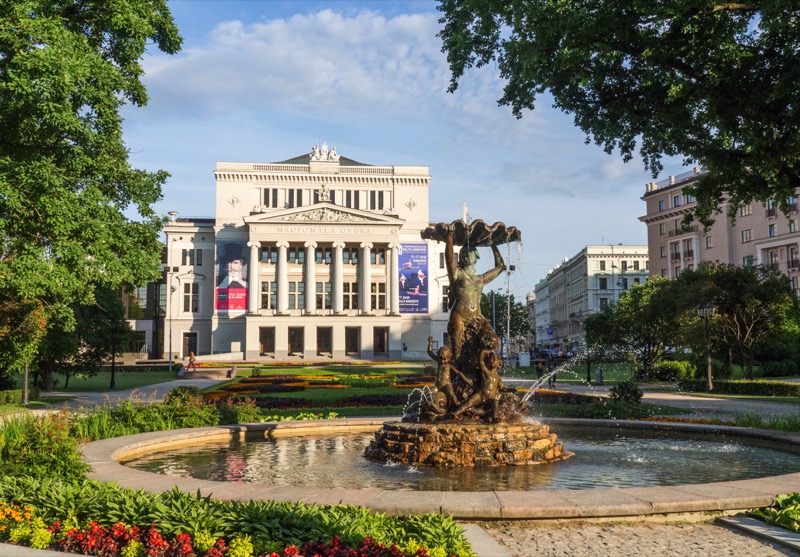
Performances are regularly held at the stately Riga Opera House, fondly called the “White House,” and an important symbol of Latvia’s status as a cultured European country. It was one of the first buildings in Riga to be renovated after Latvia reclaimed its independence from the Soviet Union. Completed in 1863, the neoclassical theater was designed by German architect Ludwig Bonstedt, and its gilded opulence has been revived in a state-of-the-art renovation. If you have extra time in your touring schedule, you can learn more about the history of the venue during a brief behind-the-scenes backstage tour.
Travel to Latvia with MIR
MIR has over three decades of Baltics travel experience with on-the-ground support, guides, and tour managers that clients rave about. Our full service, dedication, commitment to quality, and destination expertise have twice earned us a place on National Geographic Adventure’s list of “Best Adventure Travel Companies on Earth.”
You can explore the history, culture, and landmarks of Latvia on these MIR itineraries:
- Kaliningrad & The Baltics – small group tour
- Essential Baltics – independent private journey
MIR specializes in personalized private journeys, and we’d love to take your ideas and weave them into a trip tailored especially for you. Travel wherever, however, and with whomever you like relying on our expert assistance. Contact us to find out more about our custom and private travel expertise — each trip handcrafted to your interests, dates, and pace.
